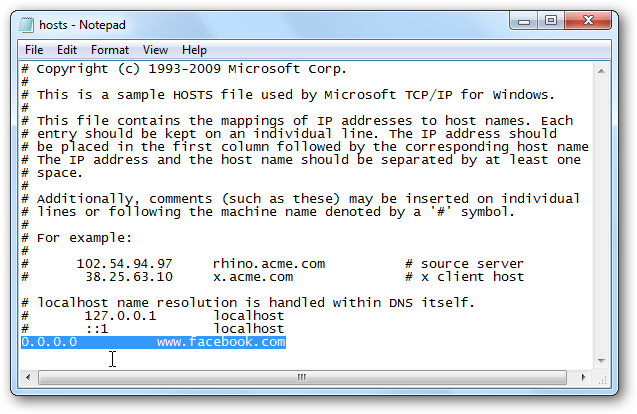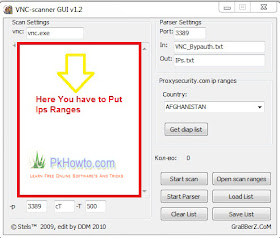- Jun 30, 2020 IPS files open with Internal Patching System software like IPS Peek. PSW files can also very easily be mistaken for IPSW files but they're actually either Windows Password Reset Disk files, Password Depot 3-5 files, or Pocket Word Document files.
- On, right-click on any IPS file and then click 'Open with' 'Choose another app'. Now select another program and check the box 'Always use this app to open.IPS files'. Update your software that should actually open Game Patch Files.
- How to open a.IPS file? Execute.IPS file by double-clicking on it. If you have already installed the software to open it and the files associations are set up correctly,.IPS file will be opened. If Windows keeps asking you what program should be used to open the file, the problem is most possibly caused by broken files associations.
- Recommended software programs are sorted by OS platform (Windows, macOS, Linux, iOS, Android etc.) and possible program actions that can be done with the file: like open ips file, edit ips file, convert ips file, view ips file, play ips file etc. (if exist software for corresponding action in File-Extensions.org's database). Hint: Click on the tab below to simply browse between the.
- How To Open Eps Files On Windows
- How To Open Ips Files On Windows 7
- How To Open Ips Files
- How To Open Ips Files On Windows 10
- How To Open Ips Files On Windows 7
- Snes Ips Files
- How To Open Eps Files On Windows 10
Mar 06, 2019 Read: Useful NirSoft Utilities That Every Windows User Should Try. Find all IP Address on the Network on Ubuntu. If you are working with Ubuntu or any Unix based OS then following are the ways. You can find the IP address using arp utility on the terminal. To open the terminal, right-click anywhere on the desktop and select “Open Terminal”.
Author: Jay Geater | Last Updated: November 26, 2018
How To Open Eps Files On Windows
IPS File Summary
File Extension IPS has two unique file types (with the primary being the Internal Patching System Patch File format) and is mostly associated with MultiPatch patching tool (Open Source) and six other software programs. IPS files are categorized ordinarily as Game Files. Other file types can be Developer Files.
We have found IPS files on the Mac, Windows, and Linux operating systems. They are both mobile and desktop device friendly. The Popularity Rating for IPS files is 'Low', which means these files are not ordinarily found on an everyday user's device.
If you would like to learn more about IPS files and the software that opens them, please see the additional detailed information below. Also, you can learn how to do some basic IPS file troubleshooting if you are having trouble opening these files.
How To Open Ips Files On Windows 7
File Type Popularity
File Rank
/ 11690
File Status
Page Last Updated
Open your files in %%os%% with FileViewPro File Viewer
Optional Offer for FileViewPro by Solvusoft | EULA | Privacy Policy | Terms | Uninstall

Modify your hosts file
Authored by: Rackspace Support
Modifying your hosts file enables you to override the domain name system(DNS) for a domain on a specific machine. DNS managementis useful when you want to test your site without the test link prior to going live with SSL,verify that an alias site works prior to DNS changes, and for other DNS-related reasons.For information about changing your DNS settings, see Changing DNS settings on Linux.
Modifying your hosts file causes your local machine to look directly atthe Internet Protocol (IP) address that you specify. Rackspace offersmanaged hosting solutions to assist withthe handling of these resources.
Modifying the hosts file involves adding two entries to it. Each entrycontains the IP address to which you want the site to resolve and a version ofthe Internet address. For example, add the following two entries points,www.domain.com and domain.com, to Rackspace’s current refreshed PHP5(PHP5-ITK) cluster:

This article provides instructions for locating and editing the hosts fileon the following operating systems:
- Microsoft® Windows® 10, Windows 8, Windows 7, andWindows Vista™
- Microsoft Windows NT™, Windows 2000, and Windows XP
- Linux®
- MacOS® X versions 10.0 through 10.1.5
- MacOS X versions 10.6 through 10.12
After you add the domain information and save the file, your system begins toresolve to the IP address that you specified. When testing is complete, removethese entries.
Windows
If you are using a Microsoft operating systemlike Windows 10, Windows 8, Windows 7, and Windows Vista you must run Microsoft Notepadas an administrator.
Windows 10 and Windows 8
Use the following instructions if you’re running Windows 10 or Windows 8:
Press the Windows key.
Type Notepad in the search field.
In the search results, right-click Notepad and select Run asadministrator.
From Notepad, open the following file:
c:WindowsSystem32Driversetchosts
Make the necessary changes to the file.
Select File > Save to save your changes.
Windows 7 and Windows Vista
Use the following instructions if you’re running Windows 7 or Windows Vista:
Select Start > All Programs > Accessories.
Right-click Notepad and select Run as administrator.
The Windows needs your permission UAC window appears.
Click Continue to grant permission.
Notepad opens.
In Notepad, select File > Open.
In the File name field, enter the following path:
C:WindowsSystem32Driversetchosts
Select Open.
Make the necessary changes to the file.
Select File > Save to save your changes.
Windows NT, Windows 2000, and Windows XP
Use the following instructions if you’re running Windows NT, Windows 2000, orWindows XP:
- Select Start > All Programs > Accessories > Notepad.
- Select File > Open.
- In the File name field, enterC:WindowsSystem32Driversetchosts.
- Select Open.
- Make the necessary changes to the file.
- Select File > Save to save your changes.
Linux
Use the following instructions if you’re running Linux:

Open a Terminal window.
Enter the following command to open the hosts file in a text editor:
Enter your domain user password.
Make the necessary changes to the file.
Press Control-X.
When you are asked if you want to save your changes, enter y.
How To Open Ips Files
MacOS X versions 10.0 through 10.12
This section provides instructions for modifying your hosts file if you arerunning MacOS X 10.0 through 10.12.
How To Open Ips Files On Windows 10
MacOS X 10.0 through 10.1.5
Use the following instructions if you’re running MacOS X 10.0 through 10.1.5:
How To Open Ips Files On Windows 7


Open /Applications/Utilities/NetInfo Manager.
To enable editing of the Network Information database (NetInfo), click thepadlock icon in the lower-left corner of the window.
Enter your domain user password and select OK.
In the second column of the browser view, select the node namedmachines.
In the third column, select the entry named
localhost.From the Edit menu, select Duplicate.
A confirmation alert appears.
Click Duplicate.
A new entry named
localhost copyappears and its properties aredisplayed below the browser view.Double-click the value of the
ip_addressproperty and enter the IPaddress of the other computer.Double-click the value of the
nameproperty and enter the host name thatyou want use for the other computer.Click the
servesproperty and select Delete from the Edit menu.From the File menu, select Save.
A confirmation alert appears.
Click Update this copy.
Repeat steps 6 through 12 for each additional host entry that you want toadd.
From the NetInfo Manager menu, select Quit.
You do not need to restart the computer.
Snes Ips Files
MacOS X 10.6 through 10.12
How To Open Eps Files On Windows 10
Use the following instructions if you’re running MacOS X 10.6 through 10.12:
On your computer, select Applications > Utilities > Terminal to open aTerminal window.
Enter the following command in the Terminal window to open the hostsfile:
When you are prompted, enter your domain user password.
Edit the hosts file.
The file contains comments (lines that begin with the
#symbol) and somedefault host name mappings (for example,127.0.0.1 – local host). Addyour new mappings after the default mappings.To save the hosts file, press Control+X.
When you are asked if you want to save your changes, enter y.
To force your changes to take effect, flush the DNS cache by entering thefollowing command:
©2020 Rackspace US, Inc.
Except where otherwise noted, content on this site is licensed under a Creative Commons Attribution-NonCommercial-NoDerivs 3.0 Unported License